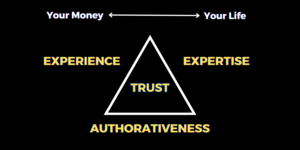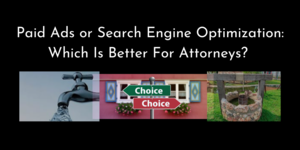In our previous post, we explained what a Lead Magnet is and shared four characteristics of effective ones. In this one, we will follow up with a set of things that we don’t want to do! Before we get to what we don’t want to do, let’s have a review.
Quick Recap
Our Leaders are targeted pieces of value that we offer to potential customers in exchange for the right to have further conversations with them.
Four Characteristics That They Should Have
- Are Specific
- Speak to Desired End State
- Immediately Consumable
- Change The Relationship
Poor performing Lead Magnets usually violate one or more of these basic characteristics. They either fail to attract prospects from within your target market or transform those strangers into parties interested in what you have to offer.

This is definitely something that you DON’T want to do!
Credit to Hedgeye for this picture.
It highlights how otherwise smart people seem to make the same mistakes as everyone else. Learning from others and patterning success is only effective when we choose the right role models.
Things We Don't Do
- Don’t provide a “report” or “guide”. Without a fail, this has to be the biggest mistake that gets made. By definition, a multi-page guide on a topic is almost never specific nor it is immediately consumable. Even if it contains ground-breaking information and is professionally written (which is rarely if ever the case), the vast majority of customers will not read it. Fewer still will ever take action that would make it valuable.
- Don’t be too general. Reports and Guides are again the biggest offenders when it comes to generalities. Being too general suggests that we have not adequately understood our market’s interests and desires. Our Offers and, by extension, our Lead Magnets should be a specific answer to our intended customer’s immediate need (desired end-state).
- Don’t overlook promoting action. To deliver value, our potential customer needs to both perceive and achieve a state change. Someone trying to lose weight needs to see their healthier self after meeting us. The relationship changes when they see us as guides to their desired end state. Our prospect has been wanting to stop smoking for years. What immediate change can we initiate that prevents them from smoking their next cigarette?
- Bonus – Don’t use coupons. Coupons and Discounts are usually ineffective Lead Magnets. They actually represent a reduction in perceived value for your Core Offer. It is that Core Offer that Lead Magnet is intended to drive traffic. We are better off segmenting a very specific piece of value from our Core Offer and giving that away for free (or at a very low cost) than undermining the overall value of our main product or service. While it often “works”, it is still the marketing equivalent of walking into a bar and determining it would be too much to ask for someone to marry you, so how about we just “move in together” instead?
As you probably noticed, the main “Don’t-Dos” for Lead Magnets are actually just situations where we violate the original “Must-Dos”. In the same way, one of the best ways to “Get Rich” is to avoid the actions that “Hinder Wealth”.
Take some time today to either review your current Lead Magnets based on these “Do’s” and “Don’ts” or envision one for your own Core Offer that follows them. If you have a question about one or a potential one, add it below. The main goal of this series is to ensure our Lead Magnets better target and attract more engaged traffic to our Core Offers.
The next post in our series will show how to develop multiple Lead Magnets that funnel into one Core Offer. Through segmentation of our Target Market and our Core Offer, we can develop multiple paths for engagement. Look for it soon!



